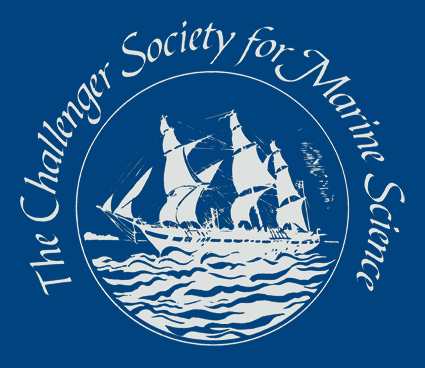BIOCARBON Cruise: Biological Influence on Future Ocean Storage of Carbon
Dr Mark Stevenson
Newcastle and Durham University (now based at University of Oxford)
In September/October 2024 I had the unprecedented opportunity to attend an inspiring cruise aboard the R.V James Cook (JC269), which was investigating carbon cycling in the North Atlantic, in the broader Iceland Basin region to the south of Iceland. My attendance on the cruise was enabled through a competitive application due to spare berths being available. During the cruise I collected samples to enable the future analysis of lipid biomarkers in the water column to assess the strength of the biological carbon pump. I am greatly appreciative of the Challenger Society Stepping Stones bursary who kindly provided funds to make attending this cruise possible.
Relatively few oceanographic cruises sample for lipid biomarkers as they are a challenging technique, but can provide great insights into productivity, the presence of marine organisms and their health. Lipids are critical components of all biological organisms and are vital for key processes in the marine ecosystem such as cell growth, buoyancy, reproduction and effective membrane function. Many lipids are source specific and so considered as biological markers or ‘biomarkers’ as they are often well preserved, resisting decay to varying extents. Lipid compounds therefore can be used to track the abundance and presence of organisms (such as algae and zooplankton) but also elucidate how degraded the organic matter is, providing insight into the functioning of the carbon cycle.

Upon arrival at key stations in the North Atlantic it was my role to sample the CTD rosette for ~4 litres of seawater from different depths, which was then taken into the laboratory to begin filtering. It was great to be part of a wider filtering team, where members of the team were sampling everything from nutrients to DNA. I am very grateful to the teams from University of Southampton and Heriot-Watt who helped optimise the filtering setup, which through their experience and advice helped me improve my filtering productivity. Seawater from positions higher in the water column where productivity is greater tended to have higher visible green colour (pigmentation) on the filters. To preserve the filters, they were frozen first in liquid nitrogen and then in a −80°C freezer.

I found my time on the cruise was extremely enjoyable and would especially like to thank the entire crew of the James Cook who were especially welcoming. The shared sense of working together for a common purpose was really enriching. As to be expected when at sea in September/October there were some bad weather days which were spent discussing and preparing science, but remarkably we got a lot done as most days were calm. Although not part of my role directly I learnt a lot about marine technology including gliders, marine snow catchers and Argo floats. I took part in regular circuits onboard the James Cook helping to improve my fitness and also got the unprecedented opportunity to see my first blue whale!

Being part of the Bio-Carbon cruise gave me the opportunity to contribute to the most detailed pelagic multi-method exploration of the carbon cycle, within the pelagic zone of the North Atlantic to date. My contribution of sampling for lipid biomarkers will contribute to building up the ‘bigger picture’, addressing the causes and timing of phytoplankton blooms, respiration and productivity. Together, this will build up vital data to help reduce uncertainty in future predictions with anticipated climate change.

Profile: I am an environmental biogeochemist with a particular geographical interest in answering earth science questions intersecting the carbon cycle and palaeoclimate especially in northern and southern latitudes. I have completed postdoctoral research understanding the carbon cycle in the Barents Sea/Arctic Ocean (Newcastle University) and palaeoclimate using novel snow petrel stomach oil deposits in Antarctica (Durham University). I also have a keen interest in oceanography, especially assessing the extent and character of phytoplankton blooms. Since January 2025 I have been working at Oxford Radiocarbon Accelerator Unit, developing compound-specific methods for radiocarbon dating.
Latest News
Royal Society Publishing Photography Competition 2025
Please see a message from the Royal Society below:
We are delighted to announce that the 2025 Competition is now open for entries until 15 August for a chance to win £1000! The competition celebrates the power of photography in conveying the wonder of science happening all around us and photographs can be submitted in the categories of: Astronomy, Behaviour, Earth Science and Climatology, Ecology and Environmental Science, and Microimaging.
The competition is free to enter and open to anyone studying or working in science at graduate level or above. Category winners will receive a one-year membership to the Royal Photographic Society and the overall winner will receive a grand prize of £1,000. Find out more: https://bit.ly/RSPphotocomp
October 2025 MEDIN Workshop: Marine Data Management, Governance and the MEDIN toolset
The Marine Environmental Data and Information Network (MEDIN) are pleased to announce that registration is now open for the next occurrence of our popular free online training workshop: ‘Marine Data Management, Governance and the MEDIN toolset’ on the 13th – 17th October 2025 on OceanTeacher Global Academy.
Marine Data Management, Governance and the MEDIN toolset
The Marine Environmental Data and Information Network (MEDIN) and OceanWise are delighted to invite you to attend our popular free online training workshop: ‘Marine Data Management, Governance and the MEDIN toolset’ on the 19th – 23rd of May 2025.
